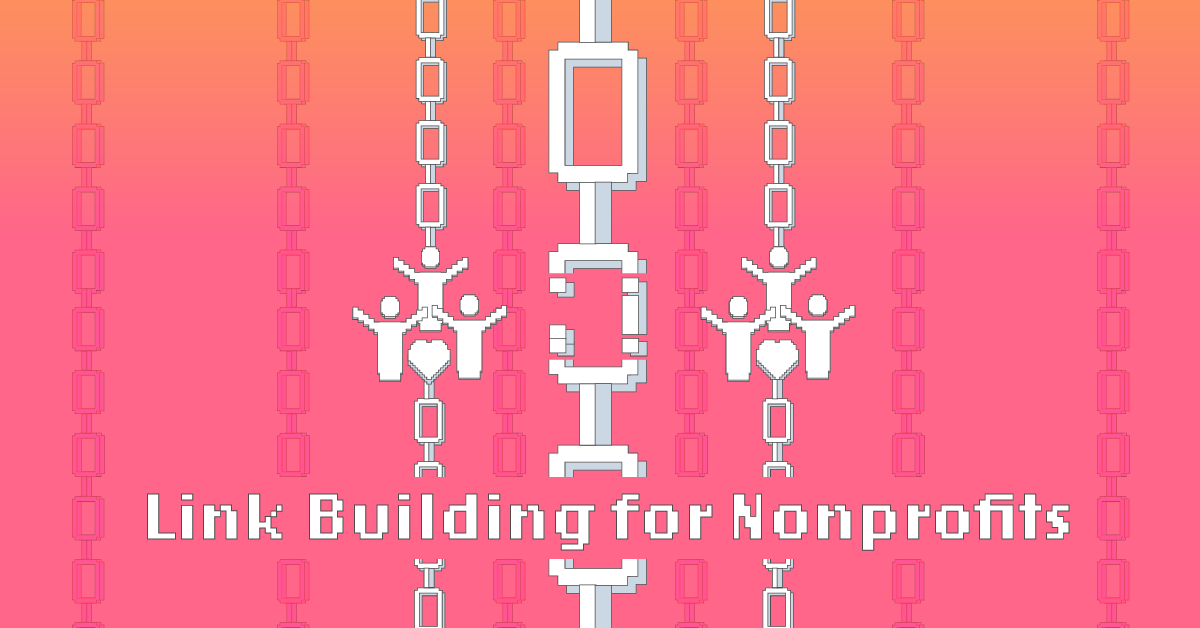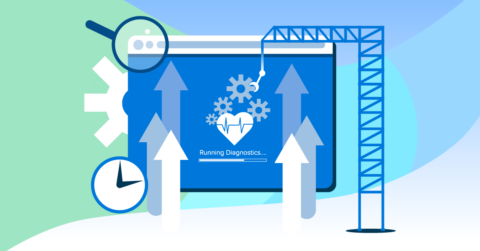
Link Building For Nonprofits: 5 Tactics
02/01/23
digital design
Today we are covering the process of link building for nonprofits. This is essential to drive more traffic to your website and increase donations, and we will keep things as actionable as possible.
Let’s get started.
Why Link Building For Nonprofits Is Important
First, let’s cover why exactly link building is worth doing for nonprofits. When people think about link building they have a tendency to associate it with large for profit companies.
However, this is a narrow way of looking at link building. Links, regardless of your industry, niche or audience, show search engines that you are an authoritative site. This has a ton of long-term benefits, including more traffic to your site and more donations overall.
Because of that, it’s worth your time to take link building for your nonprofit seriously.
5 Link Building Tactics For Nonprofits
1) Do campaigns together
Perhaps the most direct way to get a link to your website is to work together with another organization. The trade off here is that a mutual campaign can potentially create more work for you. There are likely email campaigns that need to be written as well as a certain content schedule.
Only commit to this if you actually have the time!
2) Get on roundup lists
There are a ton of roundup posts out there. They are easy to read and promise a quick result for the reader. More importantly for your organization, they are also an excellent chance to earn another link back to your website.
One good example are posts with titles like “The Best Nonprofits That…” What does your organization do? Unless it’s a super specific niche, odds are that there are plenty of other organizations doing the same kind of thing as you.
This is good news because it suggests there are at least a few roundup posts out there that your organization might well on.
One easy way to do this is to simply google the name of the roundup list that you’d expect your organization to be part of. Check out the organizations they link to. If they are all relatively similar to your own, there’s a good chance the author of the post would gladly include you.
3) Look for broken links
The internet is a graveyard of broken links. There are a number of reasons for this. Many websites are simply taken down or deactivated after a certain period of time. Maybe the people running it no longer had a use for it. Maybe the business went bankrupt, or perhaps the organization simply moved over to a different website. Something else that often happens is that link URL’s change.
Most of the time people linking to the old URL aren’t aware of the change, and if the business that owns the links doesn’t do a redirect the link will be shown as invalid. Whatever the reason, reaching out to companies about broken links is always welcome information.
The way you turn it to your advantage? Suggest that they replace the link with an active one to your own organization. Everybody wins here, as the people that come across that piece of content never want the frustrating experience of a link simply not working.
4) Look for unlinked mentions of your organization
Odds are, a good portion of the times your nonprofit is mentioned on the internet are unlinked. While this is nice and potentially drives a bit more traffic to your site, it doesn’t communicate anything to search engines. This is a problem because links act as a sign of authority.
As we point out in our ultimate guide to SEO, a lot of links to your site (assuming they are high quality) show the internet that you are a trusted resource in your niche? No links? Well, regardless of how much people talk about you, search engines can’t “validate your authority.
This is a relatively easy tactic because it doesn’t require so much work on the part of the person you are reaching out to. They simply need to find the unlinked mention and then fix it!
It’s important here to prioritize the organizations that have the biggest bang for their buck. For example, you don’t want to invest a lot of time in getting a link to your organization on the website of a company that’s completely unrelated to your industry. Conversely, if there is a big organization that you know would benefit you massively if they linked to you? Go for it!
5) Ask for a link back your website
We’ve saved the simplest link building tactic for the last. While giving somebody something in return for linking to you is usually best practice, sometimes all you have to do is ask.
This is an especially useful strategy if you can’t find any immediately obvious place that another organization might link to you. No round up posts? No recommended resource pages? Not open to running a campaign together? Not to worry – sometimes simply asking people is enough.
Of course, it doesn’t hurt to offer something in return. Just be careful here. A direct link exchange isn’t always considered a good thing by Google algorithms. If you are going to do a link exchange, be sure to follow these best practices.
A Tool To Help You Build More Links
Knowing what you need to do to build more backlinks as a nonprofit is one thing. Actually doing it? Well, that’s another story.
Thankfully a tool like Ahrefs makes all these actions relatively easy. The keyword research tool is one of the best in the industry and is capable of doing all the things mentioned in the list (and much more). Check it out!
…
Are you an enterprise, nonprofit or small business looking for help on your website? Give us a shout! We provide a free consultation. Email us at info@lughstudio.com or call us at (718) 855-1919!









